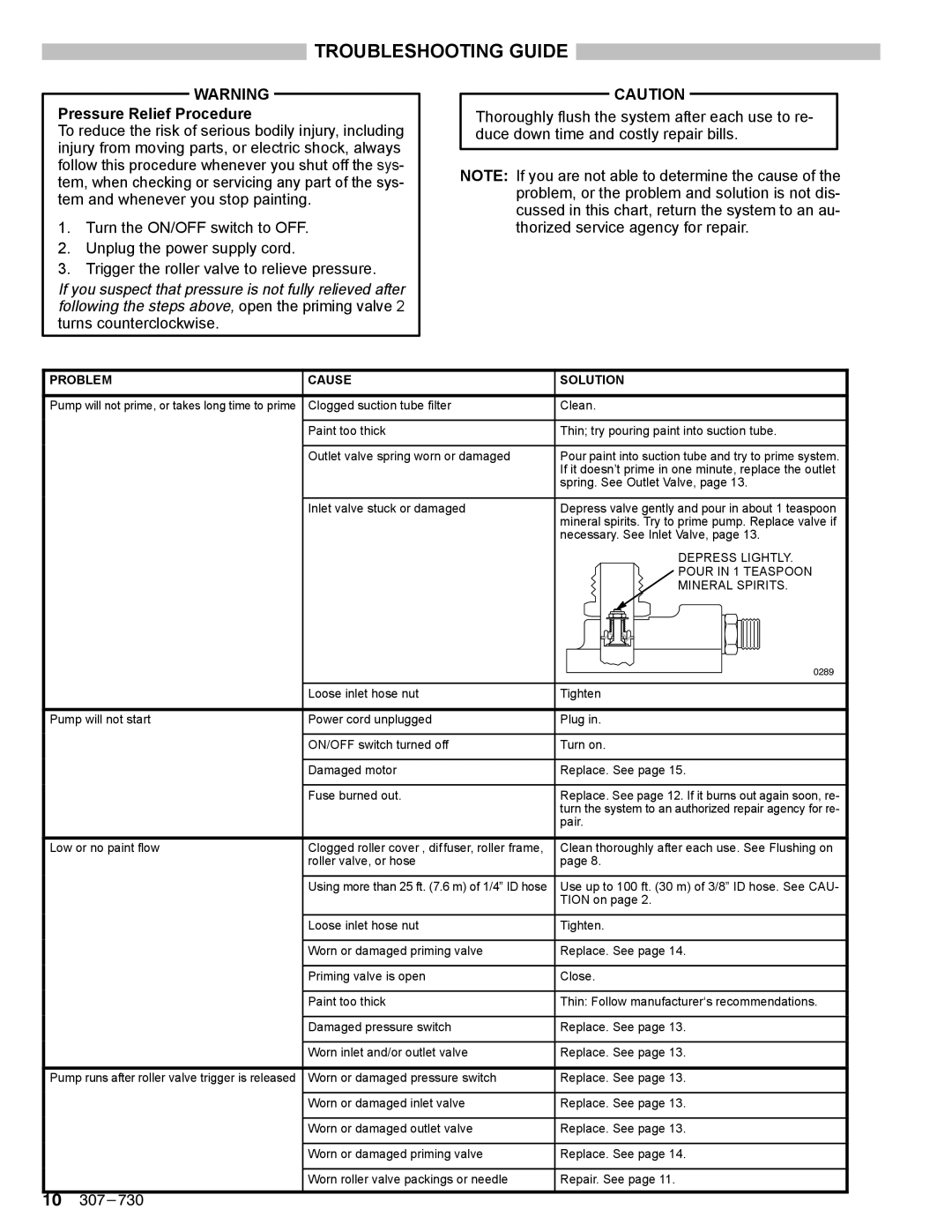218938, PT2000, 307-730, 223660 specifications
Graco Inc is a well-known player in the field of fluid handling systems, and their product range is extensive, including spray equipment, fluid handling accessories, and other innovative solutions. Among their offering, models such as the Graco 223660, 307-730, PT2000, and 218938 stand out due to their robust features and advanced technologies.The Graco 223660 is recognized for its reliability and performance in various applications. This model is particularly popular in the automotive and industrial sectors, primarily for its ability to deliver smooth and consistent finishes. Its integrated features enhance user experience, making it easy to adjust flow rates, pressure, and spray patterns on the fly. The design focuses on reducing material waste, which further contributes to cost-efficiency.
The 307-730 model brings forward a unique combination of power and precision. Equipped with advanced airless technology, it enables users to achieve professional-grade results without the need for extensive training. It is lightweight and portable, making it suitable for both large-scale projects and smaller jobs. The 307-730 also features a robust motor that efficiently handles various coatings, from thick paints to lightweight stains, ensuring versatility in applications.
Another noteworthy product from Graco is the PT2000. This model is engineered to provide maximum performance while minimizing environmental impact. With low-voc (volatile organic compounds) technology, the PT2000 is designed to support sustainable practices in the painting industry. Its user-friendly controls allow for easy adjustments, and its durability ensures longevity and minimal maintenance needs, making it a favorite among contractors.
Lastly, the Graco 218938 is an essential accessory that enhances the functionality of the Graco spraying equipment. This component is designed to improve the overall efficiency of the spray systems, contributing to a more streamlined operation. The 218938 is known for its compatibility with various Graco models, making it a versatile addition to any contractor's toolkit.
In conclusion, the Graco 223660, 307-730, PT2000, and 218938 showcase the company's commitment to quality, innovation, and customer satisfaction. With their advanced technologies and user-centric designs, these products address the diverse needs of professionals in the fluid handling and painting sectors, ensuring seamless performance for a wide range of applications. Whether for commercial or residential use, Graco's offerings continue to set the standard in the industry.

